TPX2
-
Official Full Name
TPX2, microtubule-associated, homolog -
Overview
The TPX2 protein, also known as targeting protein for Xklp1, restricted expression proliferation associated protein p100, and differentially expressed in cancer and non-cancerous lung cells protein 2 (DIL2), is a 100 kD nuclear protein that contains two c -
Synonyms
TPX2;TPX2, microtubule-associated, homolog (Xenopus laevis);C20orf1, C20orf2, chromosome 20 open reading frame 1;targeting protein for Xklp2;DIL 2;p100;protein fls353;differentially expressed in lung cells;TPX2, microtubule-associated protein hom
Recombinant Proteins
- Mouse
- Chicken
- Human
- Mammalian Cells
- Sf9 Cells
- HEK293
- His
- Non
- DDK
- Myc
- Flag
- Avi
- Fc
| Cat.# | Product name | Source (Host) | Species | Tag | Protein Length | Price |
|---|---|---|---|---|---|---|
| TPX2-17278M | Recombinant Mouse TPX2 Protein | Mammalian Cells | Mouse | His |
|
|
| TPX2-6007C | Recombinant Chicken TPX2 | Mammalian Cells | Chicken | His |
|
|
| TPX2-7044H | Recombinant Human TPX2, His-tagged | Sf9 Cells | Human | His | Full length |
|
| TPX2-829HCL | Recombinant Human TPX2 293 Cell Lysate | HEK293 | Human | Non |
|
|
| TPX2-1921H | Recombinant Human TPX2 Protein, Myc/DDK-tagged, C13 and N15-labeled | HEK293 | Human | DDK&Myc |
|
|
| TPX2-222HFL | Active Recombinant Full Length Human TPX2 Protein, C-Flag-tagged | Mammalian Cells | Human | Flag | Full L. |
|
| TPX2-2246H | Recombinant Human TPX2 Protein, His (Fc)-Avi-tagged | HEK293 | Human | Avi&Fc&His |
|
|
| TPX2-2246H-B | Recombinant Human TPX2 Protein Pre-coupled Magnetic Beads | HEK293 | Human |
|
||
| Tpx2-6615M | Recombinant Mouse Tpx2 Protein, Myc/DDK-tagged | HEK293 | Mouse | DDK&Myc |
|
|
| TPX2-9552M | Recombinant Mouse TPX2 Protein, His (Fc)-Avi-tagged | HEK293 | Mouse | Avi&Fc&His |
|
|
| TPX2-9552M-B | Recombinant Mouse TPX2 Protein Pre-coupled Magnetic Beads | HEK293 | Mouse |
|
Background
What is TPX2 protein?
TPX2 (TPX2 microtubule nucleation factor) gene is a protein coding gene which situated on the long arm of chromosome 20 at locus 20q11. TPX2 is a microtubule-associated protein that plays a crucial role in mitotic spindle assembly and function during cell division in eukaryotic cells. It was first identified in vertebrates and is known to be an intricate protein with distinct functional and structural domains, including those for binding Aurora kinase, importin, and microtubules. The TPX2 protein is involved in various cellular processes such as cell division, regulation of cell elongation, vascular development, and stress tolerance. TPX2 is also an activator of the mitotic kinase Aurora A, and it stimulates the formation of the majority of spindle microtubules via branching microtubule nucleation. The TPX2 protein is consisted of 747 amino acids and its molecular mass is approximately 85.7 kDa.
What is the function of TPX2 protein?
TPX2 plays a central role in the assembly and organization of the mitotic spindle, which is critical for proper chromosome segregation during cell division. TPX2 is essential for the progression of the cell cycle, particularly in mitosis, where it helps in the formation of the bipolar spindle necessary for equal distribution of chromosomes to the two daughter cells. TPX2 has been linked to the regulation of cell elongation in response to hormonal and light signals. TPX2 contributes to the cell's ability to tolerate abiotic stresses, which are non-living factors in the environment that can harm cell function. Proper function of TPX2 helps maintain genomic stability by preventing errors in chromosome segregation, and its dysregulation can lead to genomic instability, which is a hallmark of cancer cells.
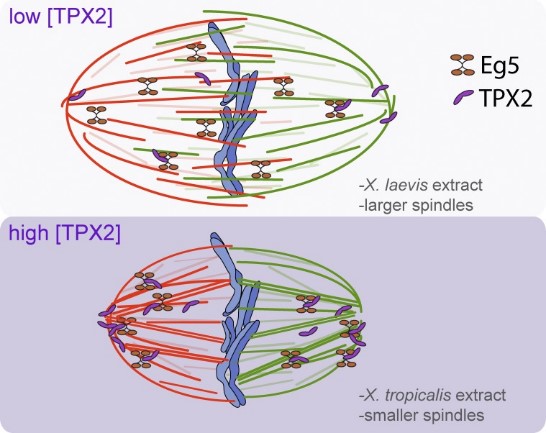
Fig1. Model of TPX2 regulation of spindle size and MT distribution via Eg5. (Kara J Helmke, 2014)
TPX2 Related Signaling Pathway
Silencing of TPX2 has been found to play an antitumor role in hepatocellular carcinoma (HCC) by regulating the PI3K/AKT signaling pathway. The PI3K/AKT pathway is a key regulator of cell survival and proliferation, and its abnormal activity is common in a variety of cancers. Studies have shown that inhibiting the expression of TPX2 can reduce the proliferation of breast cancer cells and promote cell apoptosis, and the mechanism is related to the p38MAPK signaling pathway. The p38MAPK pathway plays an important role in inflammation, stress response and cell cycle regulation.
TPX2 Related Diseases
TPX2 is highly expressed in many cancers, including breast, lung, prostate, and liver cancers. Studies have shown that TPX2 expression is associated with tumor size, aggressiveness, and metastasis. TPX2 has also been found to be abnormally expressed in neurodegenerative diseases such as Alzheimer's and Parkinson's. Abnormal expression of TPX2 in cardiomyocytes is associated with cardiovascular diseases such as myocardial hypertrophy and heart failure. PX2 has also been linked to other conditions such as diabetes, kidney disease and liver disease.
Bioapplications of TPX2
TPX2 is highly expressed in various types of cancer, including breast cancer, lung adenocarcinoma, hepatocellular carcinoma, and others. It is considered a potential therapeutic target for cancer treatment. Inhibiting TPX2 expression can reduce cell proliferation and promote apoptosis in cancer cells, suggesting its involvement in cancer cell survival and growth. TPX2 may be involved in the resistance of cancer cells to chemotherapy drugs. Understanding its role in this context can help in developing strategies to overcome drug resistance in cancer treatment.
Case Study
Case Study 1: Xin Meng, 2023
Ovarian cancer (OC) is one of the fatal gynecologic malignancies. However, there are no effective prognostic or therapeutic indicators for OC. Herein, this study aims to reveal the potential function of targeting protein for Xklp2 (TPX2) in OC progression. Immunohistochemical and bioinformatic analyses were used to evaluate the level of TPX2 in OC samples. Effects of TPX2 on cell proliferation, cell apoptosis and ROS production were evaluated in vivo and in vitro. The data showed that pathological overexpression (OE) of the TPX2 in OC could manifest a poor prognosis. Functional studies demonstrated that TPX2 silencing led to the suppression of cell proliferation in vitro and in vivo through an increase in reactive oxygen species (ROS) level and apoptosis, while TPX2 OE exhibited the opposite effect. Furthermore, by mass spectrometric analysis, we identified a novel interacting partner, Lamin A/C, for TPX2. Mechanistically, TPX2 regulated Lamin A/C's stability by modulating the level of phospho-Lamin A/C (Ser 22).
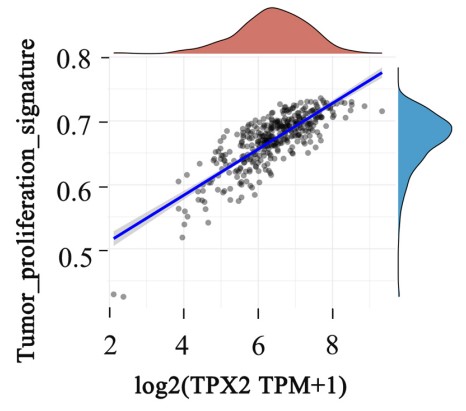
Fig1. Correlation of TPX2 level with tumor proliferation signature.
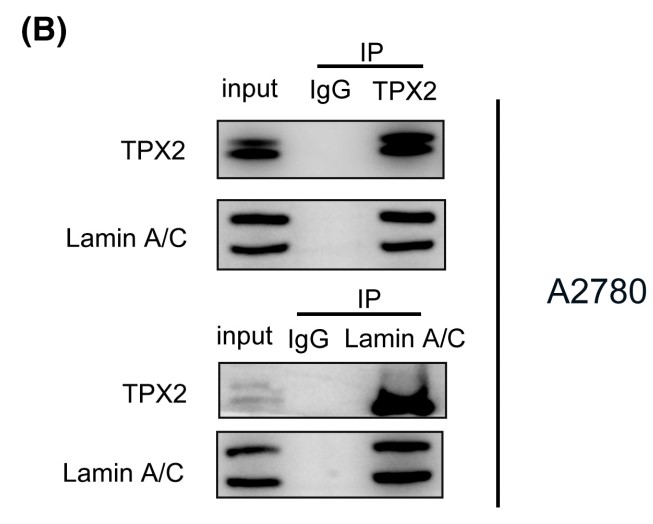
Fig2. Co-immunoprecipitation analysis was performed to detect the interaction of TPX2 with Lamin A/C.
Case Study 2: Hongbo Wang, 2023
The pregnane X receptor (PXR) is an important regulator of hepatocellular carcinoma cellular resistance to antitumor drugs. Activation of PXR was modulated by the co-regulators. The target protein for the Xenopus plus end-directed kinesin-like protein (Xklp2) known as TPX2 that was previously considered as a tubulin regulator, also functions as the regulator of some transcription factors and pro-oncogenes in human malignances. However, the actions of TPX2 on PXR and HCC cells are still unclear. In the present study, the results demonstrate that the high expression of endogenous mRNA level of TPX2 not only correlated with the poor prognosis of advanced HCC patients who received sorafenib treatment but also with expression of PXR's downstream genes, cyp3a4 and/or mdr-1. Results from luciferase and real-time polymerase chain reaction (qPCR) showed that TPX2 leads to enhancement of the transcription factor activation of PXR. Protein-protein interactions between PXR and TPX2 were identified using co-immunoprecipitation. Mechanically, overexpression of TPX2 led to enhancement of PXR recruitment to its downstream gene cyp3a4's promoter region (the PXRE region) or enhancer region (the XREM region). Treatment of HCC cells with paclitaxel, a microtubule promoter, led to enhancement of the effects of TPX2, whereas vincristine, a microtubule depolymerizing agent caused a decrease in TPX2-associated effects.
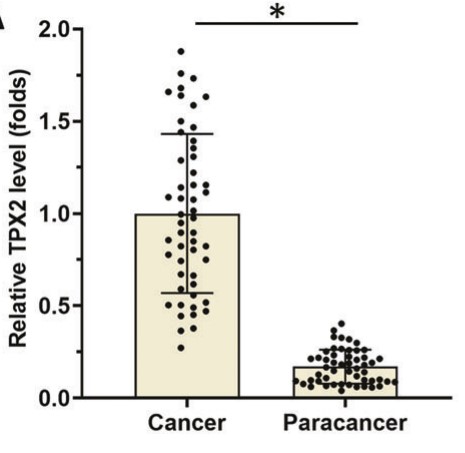
Fig3. The expression of TPX2 in HCC clinical specimens.
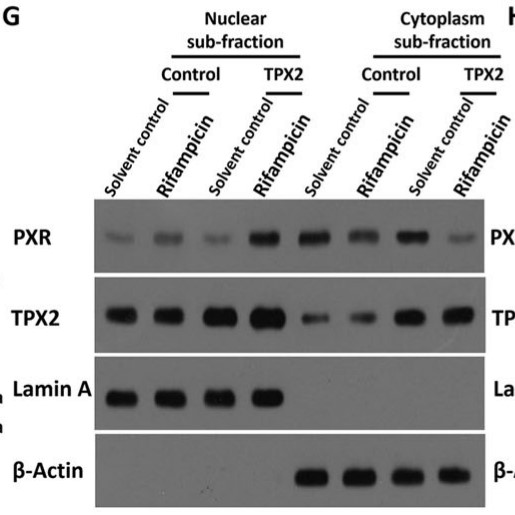
Fig4. The protein level of PXR or TPX2 was examined using western blot.
Quality Guarantee
High Purity
.jpg)
Fig1. SDS-PAGE (TPX2-1921H)
.
.jpg)
Fig2. Coomassie blue staining (TPX2-222HFL)
Involved Pathway
TPX2 involved in several pathways and played different roles in them. We selected most pathways TPX2 participated on our site, such as Aurora A signaling,Gastric cancer network 1,PLK1 signaling events, which may be useful for your reference. Also, other proteins which involved in the same pathway with TPX2 were listed below. Creative BioMart supplied nearly all the proteins listed, you can search them on our site.
| Pathway Name | Pathway Related Protein |
|---|---|
| Gastric cancer network 1 | MYBL2,SMOC2,S100P,C21orf33,TOP2A,LIN9,RNF216,ACTL6A,ECT2,GATS |
| Aurora A signaling | OAZ1,CENPA,TACC1,AURKB,TDRD7,TACC3,AURKAIP1,GADD45A,NDEL1 |
| PLK1 signaling events | BORA,SPC24,ECT2,TCTN2,NDC80,ERCC6L,PLK1S1,TPT1 |
Protein Function
TPX2 has several biochemical functions, for example, ATP binding,GTP binding,importin-alpha family protein binding. Some of the functions are cooperated with other proteins, some of the functions could acted by TPX2 itself. We selected most functions TPX2 had, and list some proteins which have the same functions with TPX2. You can find most of the proteins on our site.
| Function | Related Protein |
|---|---|
| GTP binding | RHOAD,EEF2A.1,Arf2,EIF5B,RALBB,RHOT1,ARL17B,EEF1A1B,MXB,GCH2 |
| protein binding | USP42,FBP2,CST7,HIRIP3,CHORDC1,C7orf31,RIOK3,ZNF224,FGFR1OP,YWHAH |
| importin-alpha family protein binding | GOLGA2,RAN |
| protein kinase binding | PTEN,HNRNPA0,NR4A3,KCNA5,SLC12A5,PEBP1,TRAF2,NME2,PDCD10,PARK2 |
| ATP binding | TRIO,TTLL1,PRKG2,HKDC1,FARS2,SKIV2L,PFKFB3,cka1,KATNAL2,PRPF4B |
Interacting Protein
TPX2 has direct interactions with proteins and molecules. Those interactions were detected by several methods such as yeast two hybrid, co-IP, pull-down and so on. We selected proteins and molecules interacted with TPX2 here. Most of them are supplied by our site. Hope this information will be useful for your research of TPX2.
AURKA;CDK6;NCK1;PIK3R1;CRK;GRB2;Mad2l1;NAP1L1;THAP11;pi3p;Rab7a;AFAP1;CDC5L;SAP130
Resources
Related Services
Related Products
References
- Shagisultanova, E; Dunbrack, RL; et al. Issues in interpreting the in vivo activity of Aurora-A. EXPERT OPINION ON THERAPEUTIC TARGETS 19:187-200(2015).
- Aref, AM; Hoa, NT; et al. HCA519/TPX2: a potential T-cell tumor-associated antigen for human hepatocellular carcinoma. ONCOTARGETS AND THERAPY 7:1061-1070(2014).


